
Second edition stalled again
There is no denying it! The publisher and I have been unable to predict the appearance of the next edition.
So far, we have planned on publishing dates of June, 2000, January, 2001, and February, 2003. There was even a publish date of April, 2003 that I thankfully didn’t print.
Each time, I finalized both the text and the catalog portions of the book. And each time, the publisher dissolved the deadline for unpredictable, albeit justifiable reasons.
The reasons for the delays were genuinely valid. Unfortunately, they mean nothing to you. And, if you are one of my dedicated contributors, the delays are even more painful because you have still not seen your efforts in print. I apologize to everyone of you.
I especially apologize to collectors who want the book. After all, it is for collectors that we are all sacrificing our free time.
I get inquiries every few days asking me when the book will be published and how collectors can acquire copies. I am now too embarrassed to even predict.
However, by the September edition of this newsletter, I WILL have an answer. And a solid deadline.
457 New Certificates Since March
|
1st Edition |
Last Issue |
Currently |
| Number of certificates listed (counting all variants of issued, specimens, etc.) |
8,559 |
17,797 |
18,254 |
| Number of distinct certificates known |
7,152 |
13,657 |
13,993 |
| Number of certificates with celebrity autographs |
699 |
1,399 |
1,419 |
| Number of celebrity autographs known |
232 |
320 |
321 |
| Number of railroads and railroad-related companies known |
17,276 |
23,600 |
23,742 |
| Number of companies for which at least one certificate is known |
3,516 |
5,947 |
5,834 |
Price trends
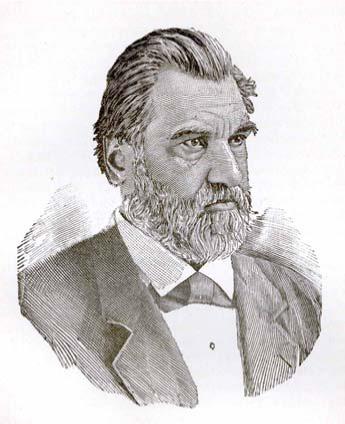
Leland Stanford
Born Mar. 9, 1824 in Watervliet, NY.
ied June 21, 1893.
(All engravings in this newsletter come from Twenty-Eight Years in Wall Street by Henry Clews, 1887.)
Quite frequently, I am asked about price trends in railroad certificates. This is not an easy answer, because I see several different markets, each with different participants.
Common certificates. Prices appear soft, but this is the most difficult part of the hobby for me to monitor. Most trade takes place through catalogs, online sales, and across tables at shows. Only dealers can really tell whether prices are moving up or down.
Intermediate-rarity certificates. This part of the market seems softer than it was a couple years ago, but overall relatively stable. At least in the United States. There currently appears to be decreased demand for American items in Europe, almost certainly reflecting a backlash in response to Bush Administration rhetoric against Germany and France. One would hope that certificate collectors would not care. However, Der Aktiensammler, and other publications, have already commented on this trend. Personally, I doubt the trend will last long.
Rare, non-autographed certificates. Demand for rare items shows a very definite division, but not one based on politics. It appears to me that the prices for rare and desirable items that appear in major auctions are down over two years ago.
Conversely, the prices for rarities that appear in internet auctions seem very soft. Professional online sellers seem to attract decent prices, but amateurs do poorly.
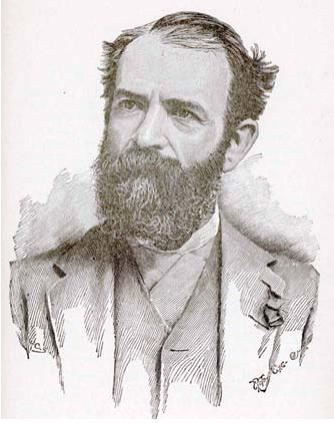
Jay Gould
Born May 27, 1836 in Roxbury, NY.
Died Dec. 2, 1892
Autographed certificates. It appears to me that, overall, prices for autographed certificates have fallen 20% to 40% over the last two or three years. Much of this drop can be blamed on the weak global economy. Part of the drop might reflect decreased European purchases.
A hard-hit area seems to be certificates autographed by regional and minor celebrities. The strongest area seems to be high quality items with good signatures and minimal cancellations. Prices for perennial favorites like Harriman, the Vanderbilts, and Morgan, are definitely down, but not drastically so. To me, one of the barometers of mid-grade signatures is Gould’s autograph on MKT certificates. Right now, they are down substantially, but maybe recovering a bit.
Activity by experience level. My guess is that activity among the expert collectors will remain as it has for years — quiet, patient, and strong. Interest in the middle ranks seems down, but not drastically in the U.S. If there is a weakness for U.S. railroad issues, I suspect it is among beginners in the U.S. and beginning and intermediate collectors in Europe.
This tells me that now – right this very minute – is the time to pick up desirable items. Especially from the internet! Maybe even for resale through professional auction houses. Even if prices for mid– and high-level items continue to drop, I do not think that the drop will be more than a few percent.
No, I do not change price estimates with every new auction result
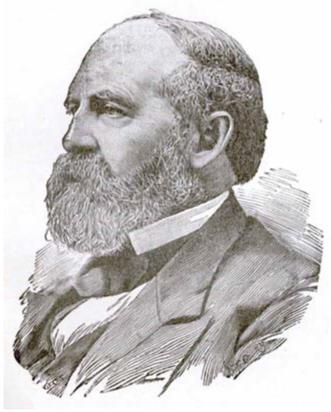
Collis Potter Huntington
Born Oct. 22, 1821 in Harwinton, CT.
Died Aug. 13, 1900
My goal is to estimate what the average prices of certificates will be over the next year or two. Taking certificates as a whole, I assume:
- average certificate conditions,
- average certificate cancellations,
- average imprinted revenues (if appropriate),
- average economic climate, and
- average political climate.
For autographed certificates, I assume:
- average signature appearances
- no ink burns, and
- average cancellations for the issue.
The most important assumption I use in projecting prices is to assume:
- a balance of the interests of both buyers and sellers.
This is the trickiest assumption of all. Most of the comments I get about price estimates being either too low or too high result from not understanding this intent.
My pricing attitude is simple. I try to estimate prices where both buyers and sellers would be equally satisfied with transactions. If one side is seriously unhappy, that side will
exit the market. Hence, my prices estimates attempt to be as fair as possible to both buyers and sellers with neither side unfairly taking advantage of the other.
For moderate- to high-demand items, I assume that the best balance for buyers and sellers for North American railroad issues will occur:
- at live auctions
- staged by major auction houses,
- in the United States.
Those auctions must
- have two- to three-week lead times,
- be well-promoted,
- be well-attended,
- cater equally to American and European collectors,
- have mail-bid and phone-bid capabilities.
For low-demand and common items, I assume the clearest balance will occur when certificates are
- sold individually,
- by professional dealers,
- under normal conditions,
- at shows or through catalogs.
When conditions are tipped toward either buyers or sellers, prices are unpredictable.
For instance, a dealer liquidating his stock is a great buying opportunity. But, no reasonable person would use such prices for predictive purposes.
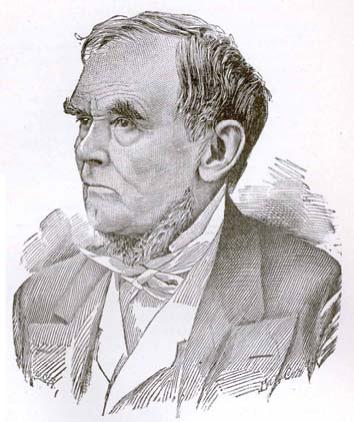
Daniel Drew
Born Jul. 29, 1797 in Carmel, NY.
ied Sep. 18, 1879.
Other bad sources of price information come from poorly promoted auctions. If participation is low, competition among buyers is restricted and prices are low. Very problematic auctions are those that exclude either European or American
collectors through short lead times, language barriers, and shipping restrictions. All fail to meet my requirement of being fair to all interested buyers.
Imbalanced conditions usually exist with internet auction sites because they favor buyers so heavily. I give such results very low weight for predictive purposes.
Let’s face it. Online auction sites are wonderful places for astute buyers. I do not consider them balanced sales outlets. Lead times are too short, descriptions are often poor, and pictures are often horrible. Many expert collectors do not participate. Sadly, inexperienced sellers often refuse international shipping, thereby removing many eager collectors.
Do not get me wrong. Several professional dealers take advantage of internet auction sites quite effectively. They act like professionals and, consequently, attract good buyers. They attract bids higher than average sellers. In my opinion, though, even their results (for high-ticket items) tend to be lower than what I expect from well-attended live auctions.
Scanning certificates — more hints
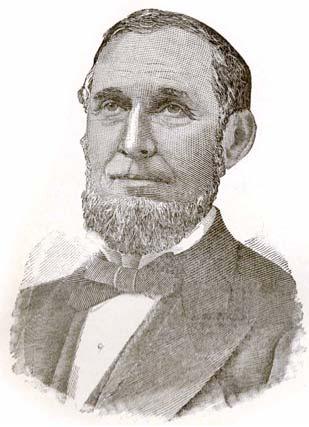
Russell Sage
Born Aug. 4, 1816 in Shenandoah, NY.
Died Jul. 22, 1906
Turn off auto-sharpening when scanning certificates with vignettes. Intaglio line work is problematic to software.
Turn off auto-exposure. Again, line work in vignettes confuses scanning software. Set exposure manually.
Scan in color. Convert to grayscale if necessary. Never scan certificates in black & white.
Resolution of 200 dpi is usually adequate. Occasionally 300 dpi. Scan autographs at 300 dpi.
Scan full size. Reduce manually when necessary.
Save as JPG (JPEG) format, level 8 (or 75%). Save at higher levels only when you intend to print on photo paper.
Always scan with certificates facing the same direction.
Close the scanner lid tightly; maybe even add extra weight.